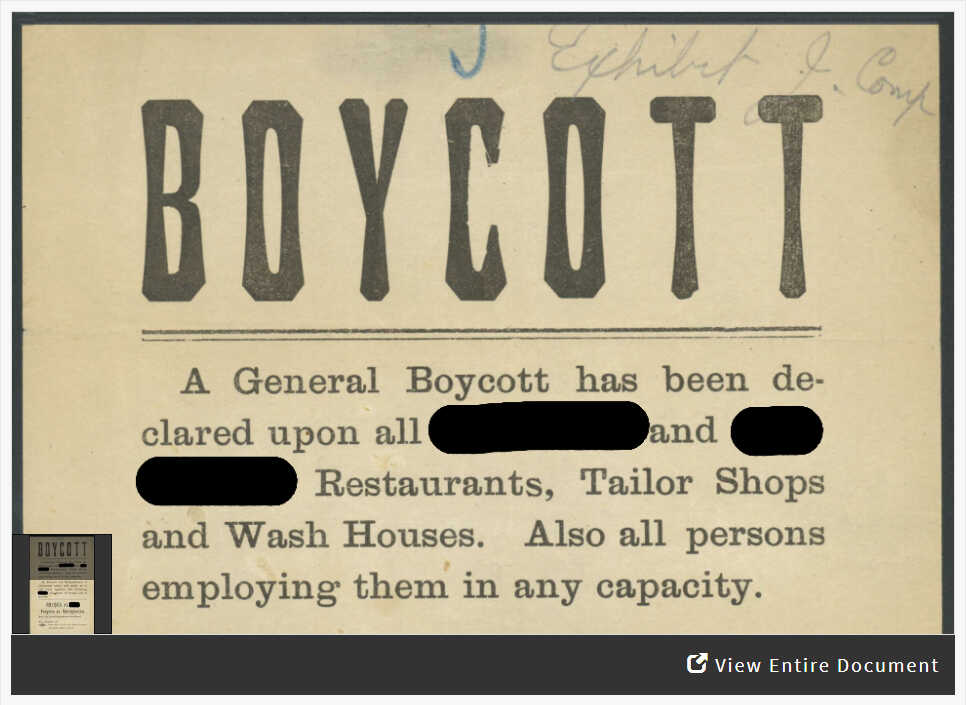Chinese Exclusion Broadside Analysis
Focusing on Details: White Out/Black Out

About this Activity
- Created by:National Archives Education Team
- Historical Era:The Emergence of Modern America (1890-1930)
- Thinking Skill:Historical Analysis & Interpretation
- Bloom's Taxonomy:Analyzing
- Grade Level:Middle School
In this activity, students will go through the process of analyzing a broadside to better understand attitudes towards Chinese and other Asian immigrants in the late 1800s.




